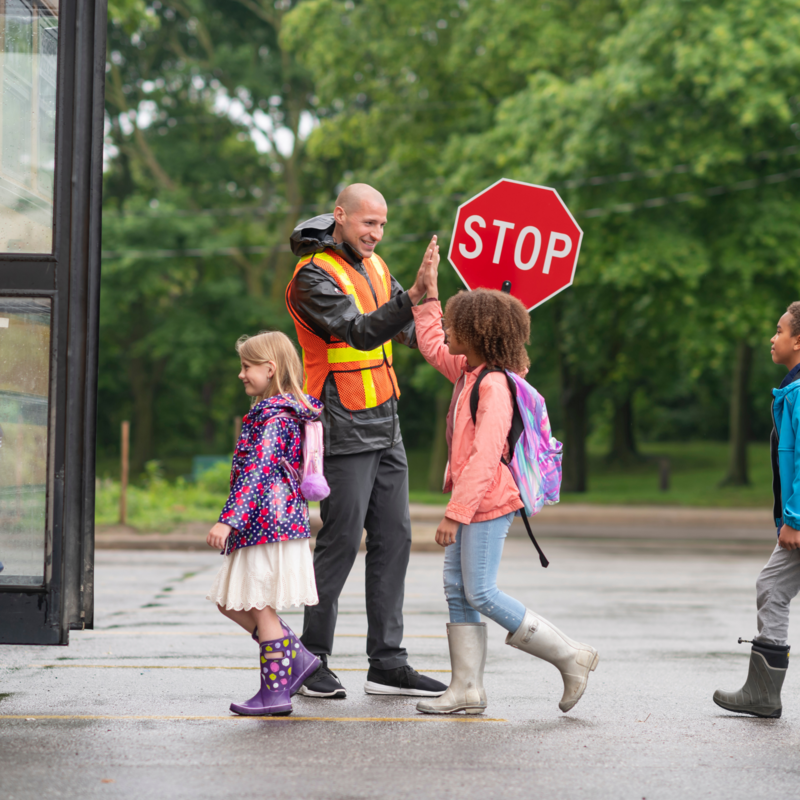Summer is fast approaching and that means ample opportunities for fun time in the sunshine. But before you let your kids tap their toes in the tulips, take a moment to refresh yourself on outdoor safety practices to ensure your child’s time outdoors doesn’t turn in to a trip to the ER.
-
- Know when it’s time to go indoors.
Kids today spend an average of just under eight hours in front of a screen every day. During the summer, technology weary parents look for any excuse to give the kids the boot to the backyard. And while there is nothing wrong with spending the day outside, you should be aware of the warning signs of a heat-related illness, including heat exhaustion and dehydration. KidsHealth.com explains that a temperature of 105 degrees or higher requires immediate medical attention. Lesser symptoms of a heat-related illness include excessive thirst, nausea, muscle cramps, severe headache and seizures.
-
- Regularly inspect swing sets, trampolines and ride-on toys for safety.
Spending time on the trampoline or swing is a summer staple for most kids starting at toddlerhood. But these large and expensive pieces of equipment are not infallible and should be regularly checked for signs of wear and tear. If you don’t already have a swing set but plan to get one for your children this summer, make sure to check its weight capacity. Many residential swing sets can handle more than 300 pounds. If your child will play by himself or with no more than one other friend, a 100-pound capacity swing set is probably sufficient. NBC News notes that children should never be left unsupervised on a trampoline, which should also be secured to level ground.
-
- Help children learn to identify dangerous plants.
Young children are drawn to brightly colored berries and plants. But they are also prone to using more than their eyes to check these things out. Kids should be taught from an early age to never eat an unfamiliar plant or to touch unfamiliar leaves. If ingested, wild foliage can cause severe gastrointestinal disturbances while plants including poison ivy and poison oak can trigger an allergic reaction that can take weeks to subside.
-
- Eliminate hiding places.
We all have “that pile” of stuff that’s collected in the backyard, against the house, or behind the garage over the years. However, old tires, logs and unused toys pull double duty as an eyesore and shelter for some pretty scary creatures. Snakes, opossums, and foxes may all seek refuge in an accessible debris pile. A curious child can easily get bitten or scratched by an unsuspecting animal sheltering until nightfall. Tall grass and standing water should likewise be eliminated as these harbor disease-carrying ticks and mosquitoes respectively. CNN reports that tick- and mosquito-borne diseases have more than tripled since 2004; the CDC warns that these diseases are “more than summertime nuisances.” West Nile and Lyme diseases are serious illnesses that can put a child in the hospital and have long-term negative health effects.
-
- Never leave children unattended in water.
More than 200 young kids die in backyard drownings each year. But it does not have to be that way. The American Red Cross emphasizes that pool safety guidelines can prevent many of these unnecessary deaths and suggests completely surrounding swimming pools with a 4-foot barrier and self-latching gate. Pools and hot tubs should be covered when not in use. Most importantly, children should never be left alone in water and those who cannot swim efficiently should never be out of arm’s reach.
Most experts agree that children need at least 30 minutes of physical activity each day and the outside is the best place for play. But, safety first. Never leave children unattended and take a few moments to ensure your yard as well as the toys and play structure in it are free of hazards before letting the kids loose.



